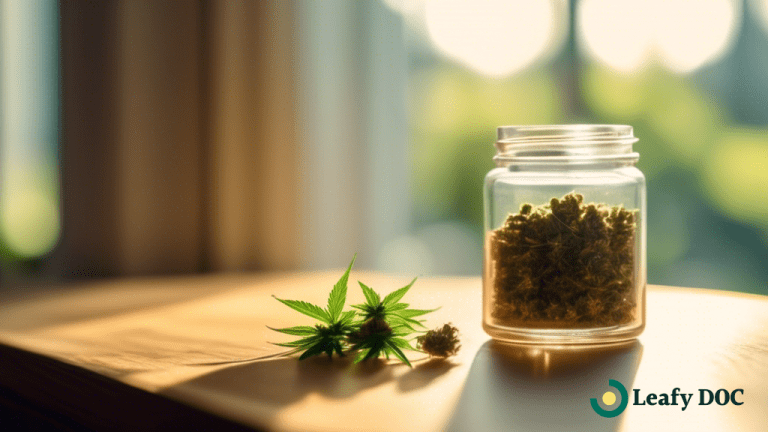Pulmonary Fibrosis
Can medical cannabis help people with this condition? Find out more below.
What is Pulmonary Fibrosis?
Pulmonary fibrosis is a medical condition in which the lung tissue becomes damaged and scarred, making it difficult for the lungs to function properly. The scar tissue, which is fibrous and thick, replaces the normal healthy lung tissue and makes it harder for oxygen to pass through the walls of the air sacs and into the bloodstream. This results in shortness of breath, coughing, and fatigue, which can progressively worsen over time. Pulmonary fibrosis is a chronic and progressive disease that can lead to respiratory failure and death.
What causes it?
The exact cause of pulmonary fibrosis is unknown in most cases. However, there are several known risk factors that can contribute to the development of this condition. These risk factors include exposure to environmental toxins such as asbestos, silica dust, and coal dust; certain medications, such as chemotherapy drugs; certain autoimmune diseases, such as rheumatoid arthritis and scleroderma; and genetic factors. In some cases, the cause of pulmonary fibrosis remains unknown and is referred to as idiopathic pulmonary fibrosis.
How common is it?
Pulmonary fibrosis is a relatively uncommon condition, affecting approximately 200,000 people in the United States each year. It is more common in people over the age of 50 and tends to affect men more often than women.
Are there types/stages?
There are several types of pulmonary fibrosis, each with its own specific cause and characteristics. The most common type is idiopathic pulmonary fibrosis, which has no known cause. Other types of pulmonary fibrosis include:
- Occupational pulmonary fibrosis, caused by exposure to environmental toxins such as asbestos, silica, and coal dust.
- Drug-induced pulmonary fibrosis, caused by certain medications such as chemotherapy drugs.
- Radiation-induced pulmonary fibrosis, caused by exposure to radiation therapy for cancer treatment.
- Connective tissue disease-associated pulmonary fibrosis, caused by autoimmune diseases such as scleroderma and rheumatoid arthritis.
Pulmonary fibrosis can be categorized into several stages based on the severity of the disease. These stages include:
- Mild pulmonary fibrosis, which is characterized by a minor decline in lung function and minimal symptoms.
- Moderate pulmonary fibrosis, which is characterized by a moderate decline in lung function and more significant symptoms.
- Severe pulmonary fibrosis, which is characterized by a significant decline in lung function and debilitating symptoms.
Signs & Symptoms
The primary signs and symptoms of pulmonary fibrosis include:
- Shortness of breath, particularly during physical activity or exertion.
- Dry cough, which can be persistent and worsen over time.
- Fatigue and weakness.
- Chest discomfort or pain.
- Loss of appetite and unintended weight loss.
- Clubbing of the fingers, which occurs when the fingertips become enlarged and rounded due to lack of oxygen in the blood.
Diagnosis & Treatment
Doctors diagnose pulmonary fibrosis using a combination of medical history, physical examination, and diagnostic tests. They may perform pulmonary function tests to measure the lung capacity and assess how well the lungs are functioning. They may also order imaging tests such as chest X-rays, CT scans, or MRIs to detect any abnormalities in the lung tissue. In some cases, doctors may perform a lung biopsy to confirm the diagnosis and determine the underlying cause of pulmonary fibrosis.
Treatment for pulmonary fibrosis depends on the severity of the condition, the underlying cause, and the individual’s overall health. There is no cure for pulmonary fibrosis, but treatment can help to manage symptoms, slow down the progression of the disease, and improve quality of life. Treatment options may include:
- Medications such as corticosteroids, immunosuppressants, and antifibrotic drugs.
- Oxygen therapy to increase oxygen levels in the blood.
- Pulmonary rehabilitation to improve lung function and overall physical conditioning.
- Lung transplant surgery in severe cases.
Can medical cannabis help?
Medical marijuana, which contains compounds called cannabinoids, has been suggested as a potential treatment option for pulmonary fibrosis. While there is limited research on the topic, some studies have suggested that medical marijuana may help reduce inflammation and pain and improve lung function. However, more research is needed to determine the effectiveness of medical marijuana as a treatment for pulmonary fibrosis.
One study published in the Journal of Pain and Symptom Management found that medical marijuana effectively reduced chronic pain in patients with multiple sclerosis. The study found that medical marijuana use was associated with a significant reduction in pain scores compared to a placebo.
Another study published in the Journal of the American Medical Association found that medical marijuana effectively reduced chronic pain in patients with neuropathic pain. The study found that medical marijuana use was associated with a significant reduction in pain scores compared to a placebo.
In addition, evidence suggests that medical marijuana may be effective in reducing inflammation. A study published in the European Journal of Pharmacology found that one of the main active compounds in marijuana, cannabidiol (CBD), had anti-inflammatory effects in animal models of lung injury and fibrosis.
Individuals with pulmonary fibrosis need to discuss the use of medical marijuana with their healthcare provider before trying it, as it may interact with other medications and have potential side effects.
Last Updated: June 14, 2024
Get Your Medical Card
Connect with a licensed physician online in minutes
Table of Contents
Keep Reading
-
Microdosing Cannabis For Pain Management: A Gentle Approach
Struggling with pain? Explore the gentle and effective relief of cannabis microdosing for pain management. Discover if this approach is right for you today!
-
Using Cannabis For Memory Loss In Aging
Discover the surprising benefits of using cannabis for memory loss in aging. Learn how this natural remedy can combat cognitive decline and improve your brain health. Click here to uncover the secrets of cannabis for memory loss!
-
Top Medical Cannabis Products For Men’s Health
Discover the game-changers in men’s health with these top medical cannabis products. Unlock the power of nature for a healthier, happier you. Click now!



